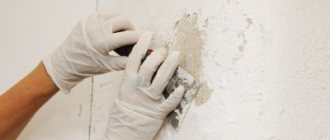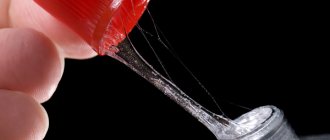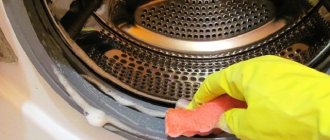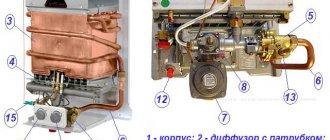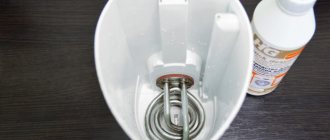Velcro on shoes needs to be cleaned. Yes - yes, don't be surprised. It does not fasten precisely because dirt has accumulated on it, which is not always visible to the eye. And if, upon closer examination, you see fluff, pellets and other contaminants, you should get down to business without delay.
Don’t throw away shoes that don’t fasten well; try putting in a little work and fixing the damaged Velcro with your own hands.
Assorted brushes
Brushes will help revive sticky fasteners on shoes. This could be an old toothbrush with stiff bristles, or a pet brush, if you have one in the house. The brush does not need to be moistened, just use mechanical movements to clean the fastener from dirt.
The modern household industry produces special brushes for removing pellets from clothes. They usually have a round shape and a rough, “collecting” surface. You can also use this device if you don’t have an old toothbrush in the house and you don’t have pets.
If you don’t have a clothes roller at hand, then you will definitely find a brush for cleaning suede shoes! Wash it off any remaining shoe polish, dry it, and start restoring the sticky parts of the fastener.
Mechanical cleaning
The most common problem with Velcro is that pieces of thread, fluff, and hair get between the hooks. The largest fragments can be cleaned out by hand. Simply unfasten the Velcro, grab foreign objects with your nails and pull them out. The clasp will regain its previous functionality.
If your nails are not long enough and the debris is too small, then it is better to use simple tools to remove the dirt from the hard part of the Velcro. This could be tweezers, a toothpick, a hook, a knitting needle, a comb, a knife, nail scissors, a screwdriver, an awl, a hairpin, a pin, etc. Pass a sharp object between the rows of Velcro hooks, moving along, and when the debris comes out, pull it out with tweezers. Do everything carefully, as sharp objects can damage both the Velcro and your hands.
For mechanical cleaning, you can also use an old toothbrush with soft bristles, an eyebrow comb, a fine-tooth comb, or a slicker brush that is used to clean pet hair. They have a dense arrangement of bristles and teeth. Therefore, they can quickly, literally in a few movements, clean the Velcro without damaging it. Peel off the soft part of the fastener, and then comb the hard side to remove dirt from it.
The most accessible method
You can restore Velcro on shoes very simply - clean them with your fingers. Choose a comfortable bright place, get comfortable, and carefully, millimeter by millimeter, begin to remove dirt from the Velcro. Large pellets and other contaminants can be easily removed by hand; all you need is patience. Once the visible dirt has been removed, try fastening your shoes. It happens that simple hand cleaning saves shoes from being thrown away.
Please note that the only drawback of this method is the time it takes.
But you won’t have to spend your budget on special chemicals, brushes or paying for the services of dry cleaning specialists.
Piercing method
Velcro itself is the same as hooks and loops, only very small. If you look closely, you will see that there are tiny loops on one side of the clasp, and the same microscopic hooks on the other.
Any sharp objects will help to clean both sides efficiently:
- Toothpick.
- Spoke.
- Needle.
- Crochet hook.
- Thin knife.
- Tweezers with sharp edges.
The algorithm of your actions is simple: with any sharp object of your choice, carefully clean each transverse row between the loops and hooks. Remove dirt with tweezers or your fingers.
Then repeat the procedure with longitudinal movements. Be careful not to tear the adhesive structure of the fastener. Cleaning with sharp objects will take more time than washing or cleaning with tape. But the result will be of high quality.
Important preliminary point
We will describe more than one life-saving method for restoring sticky fasteners. Choose the one that suits you. But before you get started, be sure to treat the adhesive fastener with an alcohol-based compound. This could be perfume or cologne, vodka, alcohol-based medical antiseptics, even alcohol-based medications are suitable if nothing else is available.
Alcohol treatment is necessary to remove greasy contaminants that may cause a defect. Sometimes alcohol solutions can help restore the functionality of the adhesive fastener without further cleaning.
Important! For alcohol treatment, do not use cotton swabs. Cotton fibers become clogged in the fastener, making it more difficult to clean. Use microfiber or sponge.
“The Velcro keeps coming off!”
And the Velcro themselves are good, there is no need to change them. It is necessary to increase the area of these Velcro strips by sewing new ones directly on top. Why don't we remove these? But they don't interfere. Cut out the details.
We cut along the contour, threads and so on.
This is what happened. If you don't know where to look, you won't see it. They run away for two months, but nothing more is required of them.
Thanks for reading!
Let your Cats have a good rest and not overwork themselves.
And as usual: My posts are about shoe repair. Let's do it again. O. Repair. Shoes. Not about economics, politics, psychology, but about shoe repair. In addition to the pairs described in the post, I repair many others. But I think the more complex the source material, the more interesting the renovation story can be, right? Let’s stop asking the questions “why repair this”, “I would throw it away”, “new ones are easier” and so on. Each person decides for himself what to do. And I already repaired these shoes and gave them away. And I will not call a person to convey the opinion of a clavadrote unfamiliar to him. I hope none of my clients are stupid. In any case, these are adults, mature people who earn their own money and spend their money as they see fit. And, believe me, they are not interested in your advice. They most likely don’t even see them, although this is not a fact. Let's get more serious somehow, shall we? Abstract from the pair in question and simply look at the repair operations.
Source
How to clean Velcro on shoes
Thanks to the alkali contained in the composition, you can very quickly remove all the fluff and dust accumulated between the hooks. To do this you need to make just a few movements:
- Use warm water and soap to make a small amount of soapy water.
- Next, using parallel movements along the hooks, comb the Velcro with a toothbrush.
This method is ideal for removing fat particles as well. But, if your loop side (the softer side) is dirty, then wash it with your fingers without using a brush.
This method can be combined with the main wash, but if the stain is only on the Velcro, then you should not wash everything together, as it will take you longer to dry completely. Dip only the problem area of your item into the soap solution.
If time is sorely lacking
If you don’t like wasting time on manual manipulations, but need to update the Velcro urgently, you can wash your shoes. It doesn’t matter how you do it – in a car or with your hands. The alkaline component of soap or powder is great for removing dirt on shoes, including velcro.
Important! When washing shoes, remember that Velcro, zippers, and buttons must be fastened.
And this method has a significant drawback, again temporary. When washing in a machine, your own hands will be free, but shoes cannot be put on until completely dry. But if we talk about the functionality of the shoes, if the Velcro doesn’t stick, you still won’t be able to wear the shoes.
Using adhesive tape
It is also an effective way to achieve results and high-quality functioning of the fastener. Most likely, each of the readers will have this stationery item at home. Here's what to do:
- Loosen any stuck debris using any of the previous methods.
- Run duct tape over the surface. This step can be repeated several times to completely clean the hooks.
This method will not make you wait long for results. The approximate time it will take you is a maximum of 5 – 10 minutes. This method can be easily used not only at home, but at work or at school, when a problem finds you in an unexpected place and at an unexpected time.
Pollution prevention
To keep the Velcro fasteners from getting dirty, it is important to store your shoes closed. When using clothes and shoes, make sure that they do not remain unfastened outside.
If the soft side of the Velcro is frayed, the fibers are tangled, then it will not be possible to save it. You will also have to replace the fastener if the rigid hooks become bent.
If the hard side becomes dirty, the Velcro stops working. To solve this problem, simply clean the clasp. This is convenient to do with tweezers, tape or thin objects.
What do you think is better - Velcro or laces? Share your opinion in the comments. Repost relevant information on social networks.
We put on our shoes with pleasure - Velcro or Velcro tape is an indispensable element in children's shoes
Velcro tape, also known as “contact tape”, also known as “Velcro”, is a type of fastener widely used in the clothing and footwear industries. This structural element is especially widely used in children's shoes. Thanks to the Velcro fastener, the child's foot is well fixed in the shoe. Velcro allows you to adjust the shoes according to their fit and fullness, and most importantly, children from a very early age can fasten and unfasten them independently.
From the history:
Velcro tape is an invention of the Swiss engineer Georges de Mestral. Georges was an avid lover of tourism, and one day, when he was tearing burdocks from the fur of his beloved dog, the idea of creating such a fastener came to him. An observant naturalist studied the design of the burdock fruit and saw that it has miniature hooks with which it sticks tightly. Georges de Mestral spent 7 years perfecting his idea. And in 1955, he patented his invention called “Velvet Fabric and Method of Its Production,” which is where the name of the tape came from: Velcro in French is velvet. Although the “tenacious” side of the tape was made of a different material - nylon, it was nylon that was good for pulling out microhooks.
We clean with improvised means
The most common contamination is the penetration of large debris (pieces of hair, thread, fluff) between the hooks. Large pieces can be removed by hand. It is enough to unfasten the Velcro, pick up foreign objects with your fingers, and pull them out. The adhesive tape will regain its former functionality.
If the debris is very small, to get it out you can take: tweezers, a hook, a knitting needle, a fine-toothed comb, a toothpick, nail scissors, a small screwdriver, for example, what comes with children's racing cars. You need to move the pointed part along the line of hooks, and then simply remove the debris with tweezers or your fingers.
If there are greasy particles or dirt, the textile fastener can be cleaned with soapy water. Use a toothbrush dipped in the solution to walk along the hooks. Process the fluffy soft part manually.
Source
Non-standard methods
Fluff, dust, particles of grease and dirt between the Velcro hooks can be cleaned with water and soap. Prepare a soap solution and use an old toothbrush to comb through the Velcro. If you need to work on the soft side of the Velcro, do it with your hands without a brush.
Sometimes ordinary adhesive tape helps to clean out debris between the Velcro hooks. To do this, you need to stir up the stuck fluff by lifting it with a brush, needle or knitting needle, apply the adhesive side of the tape to the hard surface of the Velcro and tear it off with a sharp movement.
What is contact tape?
Contact tape
(velcro) is found everywhere in everyday life.
This is tape
consisting of two contacting parts: the adhesive base on its surface has many small plastic hooks, and the other is soft, covered with pile, equipped with loops.
Interesting materials:
What to put in a silicone nibbler? What do bacteriophages attack? What to plant on the south side? What to plant at the feet of Peonies? What to plant in a dark corner of the garden? What to listen to from science fiction audiobooks? What to watch from historical films? What to watch on Apple TV? What should a teenager watch about love? What to hang on the wall behind the sofa?
Using sharp objects
They can be used to carefully remove dirt from the hooks. The following sharp objects should be used:
- tweezers;
- toothpick;
- hook;
- or a knitting needle.
Or any similar item. Here are a few steps you need to follow to clean the Velcro:
- Carefully use a toothpick or needle to pry up the debris between the hooks (they are located parallel) and remove it. You need to clean the rows in order.
- Then pull out the fluff and dust that was stirred up by the previous action with tweezers.
This method will take you longer as it requires care and careful actions. Its advantage is that you will achieve a better result, and, accordingly, repeated cleaning will not be required soon. Try to act carefully, as sharp products can damage not only the clasp, but also you.

